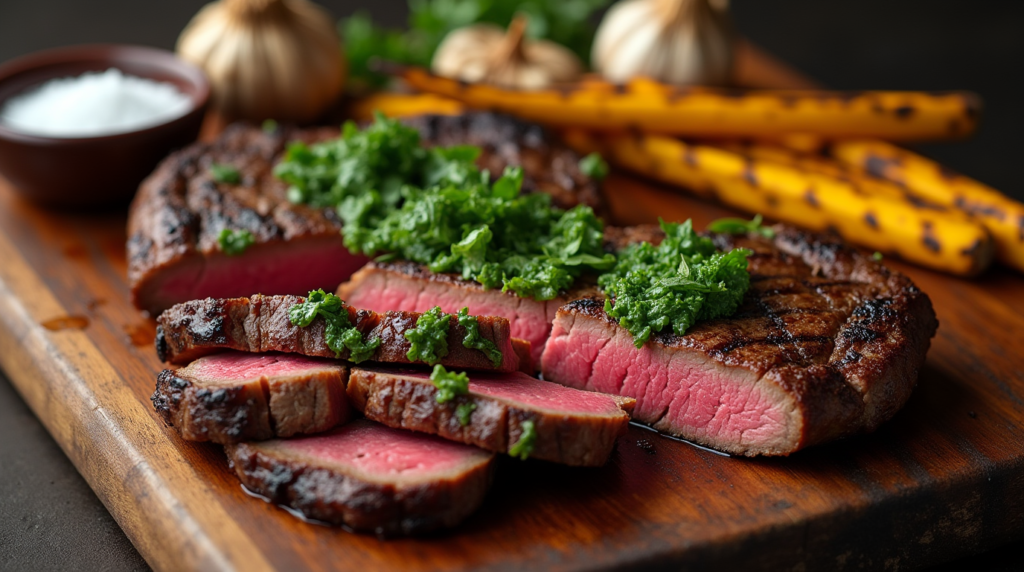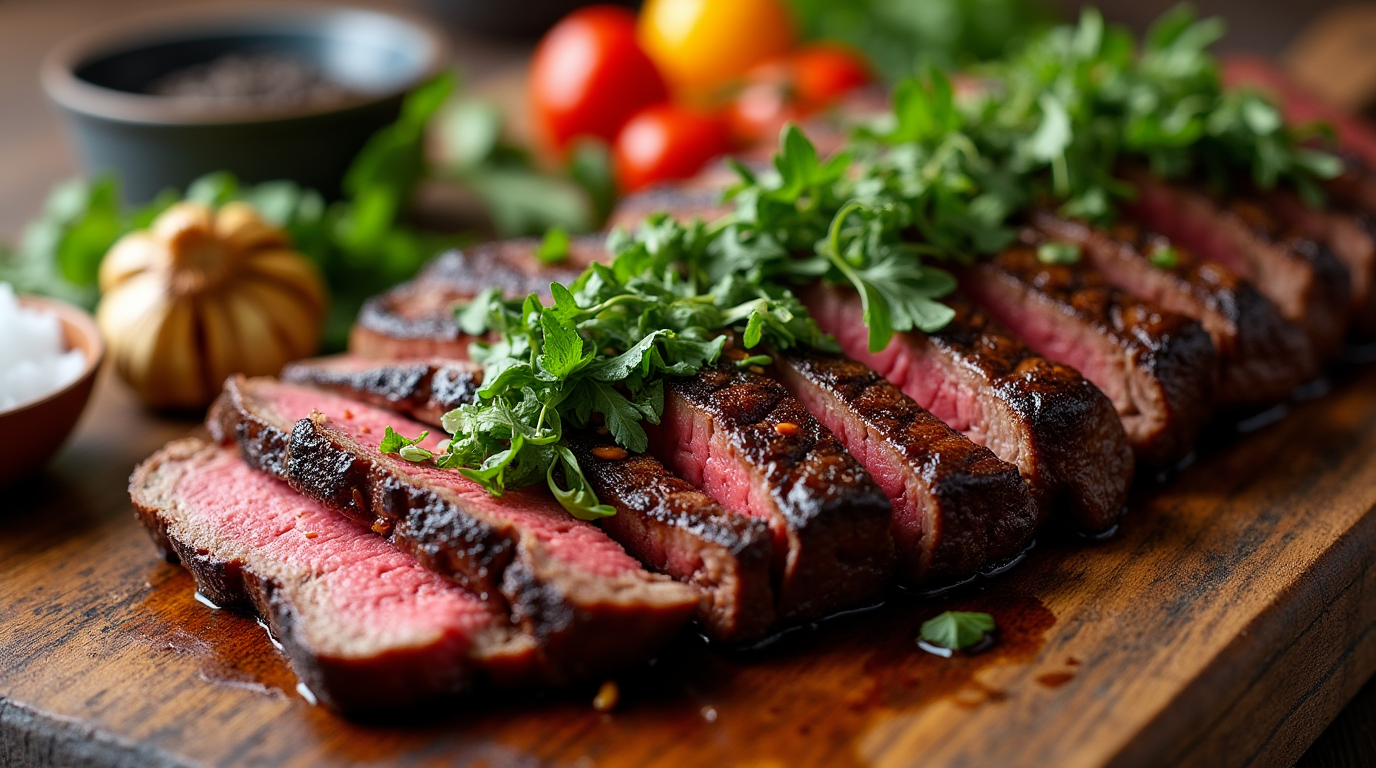Argentinian and USA Steak Perfection for Special Dinners
Steak—one of those dishes that brings people together, evokes nostalgia, and creates unforgettable moments at the dinner table. Whether it’s a backyard barbecue or a fine dining experience, the right steak can elevate any occasion. But when it comes to steak perfection, there’s a world of difference between two powerhouses of beef culture: Argentina and the USA. Each country boasts a unique way of preparing and serving steak, and understanding their differences can help you create the ultimate dinner experience. In this article, we’ll take a deep dive into Argentinian and USA steak perfection for dinner, exploring their cooking styles, flavor profiles, and pairing options.
Understanding the Two Steak Cultures: Argentina vs. USA
Overview of Argentine Steak Culture
Argentinian steak isn’t just food; it’s a cultural ritual. Argentina is known for its vast open lands, where cattle roam freely, grazing on nutrient-rich grass. This natural diet creates beef with an exceptional flavor that’s leaner and less fatty than its American counterpart. The country’s steakhouses, known as parrillas, are an integral part of the dining experience, where beef is often cooked over an open flame.
- Cuts of Meat: Argentinian steaks often include Bife de Chorizo (sirloin), Asado de Tira (short ribs), and Vacio (flank steak). These cuts are known for their natural beefy flavor.
- Cooking Method: Argentine steak is usually cooked on a parrilla, a type of grill that uses wood or charcoal. The key to Argentine steak lies in slow cooking over indirect heat, allowing the meat to absorb the smoky flavors of the fire.
- Seasoning: Argentinian chefs keep seasoning simple. A generous sprinkle of salt, sometimes paired with chimichurri sauce, is all that’s needed to enhance the beef’s natural taste.
Overview of USA Steak Culture
In the USA, steak is more than just a meal—it’s a nationwide obsession. With its varied landscapes, the U.S. produces both grass-fed and grain-fed cattle. The grain-fed variety, particularly from the Midwest, results in beef with rich marbling that provides tenderness and flavor.
- Cuts of Meat: In the U.S., popular cuts include Ribeye, T-bone, New York Strip, and Porterhouse. These cuts are known for their tenderness and fat marbling.
- Cooking Method: American steak is often seared to create a caramelized crust, with many people opting for gas or charcoal grills. The direct heat ensures a perfect crust, while cooking methods like sous-vide and pan-searing have also gained popularity.
- Seasoning: American steaks are often seasoned with dry rubs, marinades, or a combination of both, adding layers of flavor that enhance the steak’s natural richness.
Key Differences Between Argentinian and USA Steaks

Flavor Profiles: Argentina vs. USA
One of the most noticeable differences between Argentinian and USA steaks is their flavor. Argentinian beef has a cleaner, more pronounced beef flavor because of the grass-fed cattle, and it’s often described as being leaner. The minimal seasoning approach lets the beef shine through, with a distinct natural taste that’s hard to match.
On the other hand, USA steaks, especially those that are grain-fed, tend to have a richer, juicier flavor. The marbled fat within the meat melts during cooking, contributing to a tender texture and a buttery, indulgent flavor profile.
Best Cooking Methods for Each Steak Style
Argentinian Steak Perfection
If you want to cook an authentic Argentinian steak, focus on a few key techniques:
- Grill Preparation: Preheat your parrilla or charcoal grill. For the best smoky flavor, use hardwood such as oak or mesquite.
- Cooking: Place the steak over indirect heat, cooking it slowly to retain its natural juices. Turn it occasionally for an even cook. Use a meat thermometer to ensure it’s cooked to your preferred doneness (medium-rare is typically recommended).
- Resting: Let the steak rest for a few minutes after removing it from the grill. This allows the juices to redistribute and ensures a tender bite.
USA Steak Perfection
American steaks are often prepared with a bit more flair, thanks to the range of seasoning and cooking techniques available:
- Grill or Pan-Sear: Preheat your grill or cast-iron pan. For the ultimate sear, make sure the surface is hot before adding the steak.
- Seasoning: Rub the steak with your choice of dry rub or marinate it for at least 30 minutes. The seasoning helps to develop a deep crust while enhancing the steak’s flavors.
- Searing: Sear the steak on both sides for a couple of minutes before reducing the heat and continuing to cook until your desired doneness is achieved.
- Resting: Allow the steak to rest for at least 5 minutes before slicing to ensure a juicy, flavorful bite.
The Art of Pairing Your Steak: Wine, Sides, and Sauces
Best Wine Pairings for Argentine Steaks
When enjoying an Argentinian steak, it’s important to complement the natural flavors with the right wine. Argentina is home to one of the world’s best red wines—Malbec. This full-bodied red, with its dark fruit flavors and smooth tannins, pairs perfectly with the bold flavors of grass-fed beef.
Other great options include:
- Cabernet Sauvignon: Offers a similar rich profile that balances the meat’s deep flavors.
Best Wine Pairings for USA Steaks
For American steaks, wines like Zinfandel and Merlot are ideal. Zinfandel’s fruity, peppery notes pair well with the marbled texture of USA beef, while Merlot offers a smoother, rounder complement to the rich flavors of a ribeye or T-bone.
- Chardonnay: A great choice when pairing with leaner cuts like a New York Strip.
Perfect Sides for Steak Dinner
No steak meal is complete without delicious sides. Here are some traditional side dishes to enhance your steak experience, depending on whether you’re preparing an Argentinian or USA-style steak:
Argentinian Sides
- Grilled Vegetables: Eggplant, peppers, and zucchini grilled over the same parrilla for a smoky flavor.
- Potato Salad: Traditional Argentinian potato salad, often with peas and a creamy dressing.
- Chimichurri: A tangy, garlicky sauce made with parsley, vinegar, and olive oil.
USA Sides
- Mashed Potatoes: Creamy and buttery, these potatoes are a classic accompaniment to American steaks.
- Corn on the Cob: Grilled or buttered, it adds a sweet and smoky touch.
- Coleslaw: Adds a crunchy, refreshing contrast to the richness of the steak.
FAQs: Steak Perfection for Dinner
Q1: What’s the best way to cook steak for beginners?
For beginners, the best method is to start with a thick cut like ribeye or New York Strip. Season simply with salt and pepper, and cook on a hot grill or in a pan until it reaches your desired doneness. Make sure to let the steak rest before serving.
Q2: What makes Argentine beef different from USA beef?
Argentine beef is known for being grass-fed, which results in leaner, less fatty meat with a cleaner flavor. USA beef, particularly grain-fed beef, tends to have more marbling, which adds to its juiciness and tenderness.
Q3: How do I achieve a crispy crust on a steak?
To get a crispy crust, ensure your pan or grill is hot before adding the steak. Pat the steak dry with paper towels to remove excess moisture, and avoid flipping it too soon to let the crust form.
Q4: Can I replicate Argentine-style steak at home without a parrilla?
Yes! If you don’t have a parrilla, you can use a charcoal or gas grill. The key is indirect heat and slow cooking to allow the beef to absorb the smoky flavors.
Conclusion: Elevating Your Dinner Experience with Steak Perfection
Whether you’re in the mood for the clean, natural flavors of Argentine beef or the rich, juicy tenderness of American steak, both options offer an unforgettable dining experience. With the right techniques, seasonings, and pairings, you can create a steak dinner that’s truly perfect. Experiment with both styles and enjoy the unique flavors each has to offer. The next time you’re preparing steak for dinner, make it an event worth remembering. Happy grilling!

